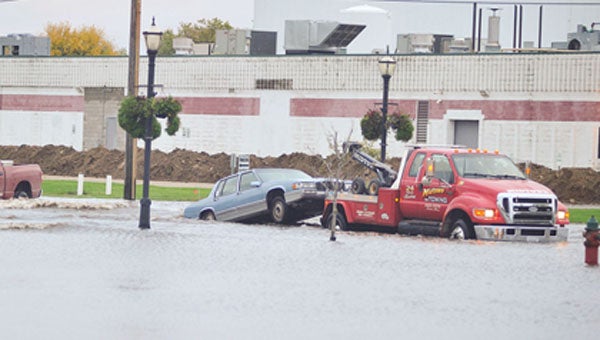Austin flooding not spring concern
Published 7:56 am Monday, March 7, 2011

Marc Feuerhak of Midtown Auto towes a stranded car out of flood waters on North Main Street as a truck tries to cross behind him during Austin's last round of flooding, which occurred in September, 2010. -- Eric Johnson/photodesk@austindailyherald.com
Although flooding is a major concern around the state — especially with all the snow — history has shown summer to be more brutal than spring in Austin.
Of the five most historic floods in Austin, all happened in mid- to late-summer from heavy rain, according to National Weather Service records.
“It’s just all about timing,” said Steven Lang, assistant city engineer of Austin. “It all depends on how fast it melts and if there’s a rain event with that melt.”
Lang and hydrologists have both said heavy rain and frozen ground are the chief concerns, as runoff quickly travels to the river.
However, the worst recorded Austin spring flood happened 61 years ago in March, when the crest reached 17.8 feet — about three feet above the Cedar River’s flood stage. Last September’s flood reached 20.6 feet and was the sixth worst recorded flood. The current Cedar River depth is at 4 feet.
Flood forecasts this spring have highlighted risks on the Mississippi, Red and St. Croix rivers, but they have only shown slight risks for the Cedar River.
“All the tributaries are running higher, and all that concentrates and runs into the main rivers,” said Mike Welvaert, hydrologist at the National Weather Service in LaCrosse.
He added smaller rivers don’t usually see major spring floods like large rivers.
The most recent spring floods in Austin happened April 7 and 12, 2001, when the ground was so saturated, continuous rain caused the river to crest twice in several days. However, both the river crested by only a little more than a foot each time.
But because all floods are unpredictable, Justin Hanson of Mower Soil and Water Conservation recommends everyone purchase flood insurance because it can take 30 days to go into effect. The local Red Cross is also preparing several things for disaster response in case of spring floods.


